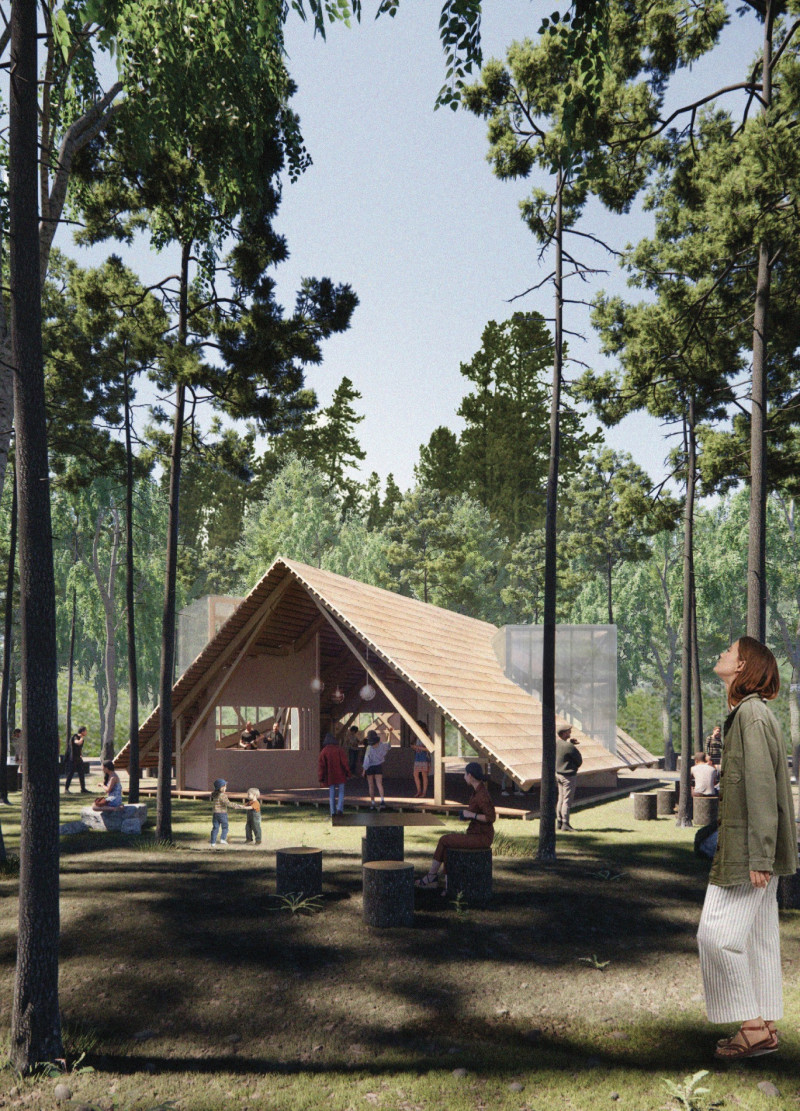5 key facts about this project
At its core, the gathering space is composed of three distinct yet interconnected volumes, each designed for specific functions such as workspace, storage, and communal gathering. This configuration reflects a thoughtful approach to flexibility, allowing different activities to occur simultaneously without intruding on one another. The architecture’s layout promotes ease of movement and interaction, aligning with the festival's goals of inclusivity and communal spirit.
One of the most notable features of this project is its expansive roof structure, which unites the three volumes while providing protection and shelter. The roof is designed with lightwells that allow natural illumination to filter through, creating a dynamic interplay of light and shadow inside the space. This thoughtful incorporation of daylight not only enhances the aesthetic quality of the gathering area but also contributes to energy efficiency, highlighting the design’s responsiveness to environmental considerations.
Materiality plays a crucial role in the overall design, as the choice of materials reinforces the project’s connection to the surrounding environment. Wood shingles cover the roof, evoking a sense of warmth and familiarity, while plywood panels constitute the main structural elements of the volumes. Dimensional lumber is used strategically to provide support and create defined spaces without overwhelming the design. The addition of polycarbonate sheets in specific areas introduces transparency, allowing for visual connectivity between the interior and exterior, which is essential for a project aspiring to bridge human interaction with nature.
The architectural design also embraces a unique approach to lighting, especially in the evening. The use of lantern-like fixtures around the gathering area enhances the overall atmosphere, encouraging participants to engage in social activities long after sunset. This consideration for a multi-functional space further emphasizes the architecture’s emphasis on community, as it extends the usability of the gathering area beyond daylight hours.
The project is thoughtfully situated in a wooded area, enhancing its integration with the landscape while respecting the local context. This aspect is particularly important, as it allows the gathering space to serve as a venue that not only supports festival activities but also honors the natural beauty of its surroundings. The design reflects a commitment to the principles of sustainability and stewardship of the environment, which resonate deeply within the cultural values of the region.
This design stands out due to its attention to detail, its cultural sensitivity, and an innovative use of materials and forms. The architects have successfully blended modern techniques with traditional motifs, ensuring that the gathering space resonates with the local culture while providing a contemporary architectural experience. The arrangement of spaces promotes social interaction, and each architectural design choice supports the overall mission of the Sansus Festival.
For those interested in exploring this project further, reviewing the architectural plans, sections, and designs will provide deeper insights into the planning and execution of this gathering space. The project represents not just a physical structure, but a thoughtfully curated environment that speaks to the value of community connection and cultural expression.


























